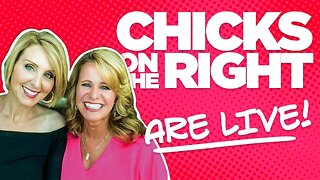Premium Only Content

How Diamond Dove Feeds
Diamond doves (Geopelia cuneata) are small, graceful birds that are commonly kept as pets due to their charming appearance and gentle nature. When it comes to caring for their chicks and feeding them, here's a general description of their behavior and feeding process:
Nesting and Egg Laying: Diamond doves usually build their nests in relatively secluded and sheltered areas. The female lays eggs in the nest, usually one at a time, with a typical clutch size of 2 eggs. The eggs are small, white, and slightly glossy.
Incubation: The female dove takes on the primary responsibility of incubating the eggs. She sits on the eggs to keep them warm and ensure proper development. The incubation period typically lasts around 13-14 days.
Hatching: Once the eggs hatch, the chicks emerge as small, pinkish, and mostly featherless creatures. They are initially blind and helpless.
Feeding Chicks: Both the male and female parents take turns feeding the chicks. The parents produce a special secretion known as "crop milk" or "pigeon milk" in their crop, which is a specialized pouch-like structure in their throat. This crop milk is rich in nutrients and is regurgitated to feed the chicks. It's not actual milk, but a nutritious substance produced by the parents.
Crop Milk Feeding Process: The parent birds bend over the chicks and regurgitate the crop milk directly into the chicks' open beaks. The chicks instinctively bob their heads up and down to stimulate the parents to regurgitate the food. This feeding process occurs multiple times a day, and the chicks grow rapidly during this phase.
Transition to Solid Food: As the chicks grow and develop, their diet gradually shifts from entirely crop milk to a mixture of crop milk and solid food. The parents start introducing small seeds and other soft, easily digestible food items into their diet. This helps the chicks adapt to a more varied diet and prepares them for independence.
Fledging: After about 12-14 days, the chicks become fully feathered and are ready to leave the nest. This stage is called "fledging." Initially, they might be a bit unsteady on their feet and not very skilled at flying, but they quickly learn and improve as they gain experience.
It's important to provide the parent birds with a balanced and nutritious diet during the breeding and chick-rearing period to ensure the health and well-being of both the parents and the chicks. Fresh water should always be available as well.
Keep in mind that while diamond doves can make great pets, breeding and raising chicks requires a good understanding of their needs and behavior. If you're planning on breeding diamond doves, it's recommended to do thorough research and consult with experienced aviculturists to ensure a successful and humane breeding process.
-
 1:03:23
1:03:23
Dear America
3 hours agoWorld Peace or WWIII?! Russia and Ukraine Meet WORLD CHANGING Meeting!!
205K62 -
![🔴[LIVE TRADING] Fed Chair Powell Speech, Inflation Report & Retail Sales || The MK Show](https://1a-1791.com/video/fww1/7f/s8/1/3/o/v/K/3ovKy.0kob-small-The-MK-Show-May-15th.jpg) LIVE
LIVE
Matt Kohrs
11 hours ago🔴[LIVE TRADING] Fed Chair Powell Speech, Inflation Report & Retail Sales || The MK Show
1,117 watching -
 1:37:50
1:37:50
Chicks On The Right
5 hours agoRFK's hearing is LIT, Trump gets a camel welcome, and Shri has no idea who he represents
42.7K5 -
 LIVE
LIVE
Consensus by CoinDesk
1 hour ago $0.15 earnedCoinDesk Live at Consensus 2025 - Day 2
91 watching -
 LIVE
LIVE
Badlands Media
7 hours agoBadlands Daily: May 15, 2025
4,644 watching -
 20:52
20:52
World2Briggs
12 hours ago $0.28 earnedIf The Economy Crashes 10 U.S. States That Will Collapse First
4.75K4 -

The Mike Schwartz Show
2 hours agoTHE MIKE SCHWARTZ SHOW with DR. MICHAEL J SCHWARTZ 05-15-2025
8.09K -
 4:01:42
4:01:42
The Bubba Army
19 hours agoDerek Chauvin a Free Man? - Bubba the Love Sponge® Show | 5/15/25
61.3K10 -
 1:12:34
1:12:34
Game On!
14 hours ago $4.13 earnedSURPRISE! The 2025 NFL Schedule has been RELEASED!
41.3K2 -
 1:48:18
1:48:18
BEK TV
1 day agoTrent Loos in the Morning 5/15/2025
22.9K1